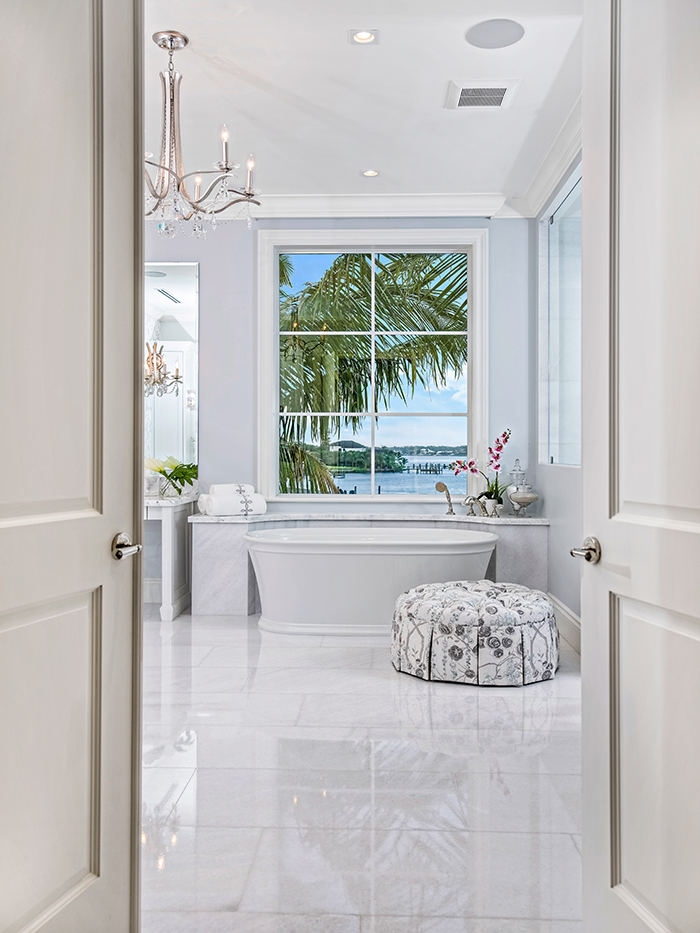
When hurricanes storm through communities, they have the ability to ravage and destroy peoples’ homes, businesses and other property. Hurricane impact-rated systems are one way to help alleviate and prevent this destruction.
Hurricane impact-rated systems refer to windows, doors, and other glass and fenestration products that are specifically designed and tested to withstand the high winds and flying debris that come along with hurricanes. These systems are especially important in areas prone to hurricanes, like coastal regions in the United States.
Hurricanes Milton and Helene were two such hurricanes that caused widespread damage across the southern United States in the fall of 2024. Hurricane Helene, a Category 4 storm caused economic losses estimated at $250 billion, while Hurricane Milton’s estimate is around $50 billion, according to The Harvard Gazette.
“Hurricane Helene traveled nearly 500 miles inland, creating disaster areas in Florida, Georgia, North Carolina and Tennessee. The glass and fenestration industries continue to innovate and enhance the performance of all their units to combat extreme weather conditions,” says Mike Layne, Regional Sales Manager at Kolbe Windows & Doors. “Now is also the time for manufacturers to educate all customers on the impact options available, clearly demonstrating the level of performance these windows and doors offer while communicating their ability to adapt to a variety of lifestyles and visions.

The importance of impact rated products
Hurricanes and other extreme weather events can have a devastating affect on homes, even if only one system is damaged. "Impact-resistant products are essential for protecting a home from rapid internal pressurization,” says Dean Ruark, Vice President of Engineering and Innovation of PGT Innovations. “If a single window or door fails during a storm, it can create intense pressure on the building's roof and walls, often leading to catastrophic structural failure.”
Looking at the 2024 hurricane season in the United States, it has been particularly active, with warmer waters causing more rapid intensification of storms. The impacts of climate change are also increasingly apparent. According to the National Center for Environmental Information, there is a 59% chance that 2024 will rank as the warmest year on record.
According to Mike Layne, Regional Sales Manager at Kolbe Windows & Doors, the primary advantage of impact-rated products is the enhanced performance they offer to a home’s interior against windborne debris during hurricanes and tropical storms. Additional benefits include superior UV ratings, improved energy efficiency and better acoustic performance.
“It’s important to invest in impact-rated products if you live coastal areas because they help protect homeowners and their families from the devastating effects of hurricanes and extreme weather,” says Jeffrey Gore, Vice President General Manager Coastline at Marvin. “They also eliminate the inconvenience, cost and aesthetics associated with using plywood sheets and storm shutters which require installation, removal and storage.”
Marvin produces impact-rated windows and doors in its Coastline, Ultimate and Elevate product lines that are engineered to withstand high winds and flying debris generated by severe storms. These impact certified products appear the same as standard products, with no visible differences such as hinges or added reinforcements. Properly installed windows and doors harden a home and prevent storm damage by maintaining the structural integrity, ensuring that extreme winds do not penetrate and create dangerous pressure imbalances that can lead to catastrophic structural failure.

The future of impact-rated products and the industry at large
Josh Jensen, president of YKK AP's residential business group says that these more frequent weather events often cause building codes to be reviewed and modified, which drives changes to product development and design.
Jensen says that when it comes to impact rated systems, customers have been asking for larger window lites, a bolder aesthetic and energy efficiency. “These trends will likely remain, however we will likely see higher demand for hurricane-resistant windows and doors in coastal areas, and in particular, Florida,” says Jensen.
Layne says the most common request for impact-rated systems is for larger units; however, the laminated glass used in the construction of impact-rated units has size limitations. Architects and home designers who frequently work in regions where building codes mandate impact products have grown increasingly aware of these constraints and how to design their projects accordingly.
Layne adds that geometric windows with impact capabilities are also in demand, and they serve as an excellent design solution. Unique shapes like triangles or trapezoids are another way for designers to maximize the use of glass and frame views of the outdoors while working within the size limitations.
In Florida specifically, Ruark says that many new Floridians are less familiar with hurricanes, which has driven a surge in demand for impact-resistant products.
"Currently, most of the conversation centers on designing for surge, scouring, and wave action, as recent hurricanes have been predominantly surge-related. However, when we see wind-driven storms like Hurricane Andrew (1992), or more recently Hurricane Dorian (2019), which bring significant debris impacts to structures, the focus traditionally shifts to improving impact-resistant products and standards. Both surge and wind resilience will likely shape future industry standards and building codes.”
Ruark adds that the Florida Building Code is proving effective, where homes built to recent codes are withstanding the barrage of hurricanes that have made landfall in Florida in 2024. He says that PGT Innovations is exploring "code-plus" options, such as those in the IBHS Fortified Program, which prepare buildings for even more severe wind events than current codes mandate.
“In light of recent hurricanes, it is likely that more regulations will be introduced in areas that have traditionally recommended—but not required—the use of impact-rated products,” says Layne. “Relatedly, new customers are expected to express an interest in impact-rated window and door products for the first time.”
Gore says that moving forward, the glass and fenestration industries should proactively enhance product offerings to anticipate the intensifying demands of extreme weather; including investing in R&D for stronger, more resilient materials, and manufacturers should emphasize education for contractors and homeowners about the importance of proper installation and maintenance of impact-rated products.


